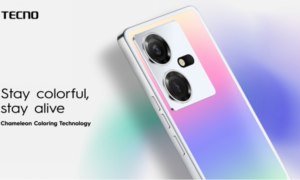You cannot in any way over emphasize the massive importance of batteries in our lives.
Batteries have greatly enhanced the mobility of technology and you can’t really imagine a world without battery packs.
Lithium-ion (Li-Ion) and Lithium Polymer (Li-Po) batteries are the two most common types of battery systems. Majority of smartphones draw their power from Li-on batteries while a section use Li-Po batteries.
So, what are the factors that influence the choice between Li-Ion and Li-Po batteries?
Well, here are some,
![[image] [Batteries Types] Li-ion vs. Li-Po](https://mobitrends.co.ke/wp-content/uploads/2015/06/image-Batteries-Types-Li-ion-vs.-Li-Po.jpg)
Energy Density Level
Energy density is by definition ‘the amount of energy stored in a given system’. Li-ion batteries have an average energy density of 110-160 Wh/kg, while Li-Po batteries have a 100-130 Wh/Kg average rating.
Therefore, under optimum conditions, a 1Kg Li-ion battery can produce 160 Watts of Power while a 1 Kg Li-Po battery will produce 130 watts of Power.
A win for Li-on batteries
Related: Next Generation Super Li-on Batteries to last up to Three Times longer
Battery Life
The durability of a smartphone battery is largely determined by its cycle life.
By definition, the Cycle life of a battery is the number of charge/discharge cycles that the battery is able to support before its capacity falls below 80% of its original capacity.
Li-ion batteries have a cycle life of between 500 to 1000 charge/discharge cycles, while Li-Po batteries have a cycle life of between 300 to 500 charge/discharge cycles.
Another win for Li-Ion batteries
Safety
You must have heard tales of smartphones bursting into flames and causing some serious bodily harm. In most instances, mishandled Li-Ion batteries are the culprit behind such occurrences.
Li-ion battery are susceptible to combustion when overheated or overcharged. Battery manufacturers have to include a series of protection mechanisms to keep this from happening.
Li-Po batteries have an improved resistance to overheating and overcharging, an aspect that makes them less susceptible to combusting and therefore, are much safer.
A win for Li-Po batteries
Design
Li-Ion batteries are thick, rigid and have a low level of flexibility. This makes the batteries in appropriate in the design of flexible smartphones concepts.
Li-Po batteries on the other hand, are lighter, thinner and have a flexible form factor. This aspect makes the Li-Po batteries perfect for flexible smartphones concepts.
Another win for Li-Po batteries.
Costs
Li-Po batteries are more expensive to manufacture when compared to Li-Ion batteries. Li-Po are only economical to manufacture when they are mass produced.
This is a win for Li-ion batteries.
Next: Stanford develops Next-gen battery; it takes just a minute to recharge
Kevin is a tech enthusiast and the lead writer at MobiTrends.co.ke. He has been writing about smartphones and tech related topics since October 2012. About Us | Contact Us






